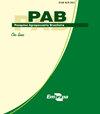甲型流感病毒在巴西圣卡塔琳娜州养猪场的传播
IF 0.7
4区 农林科学
Q3 AGRICULTURE, MULTIDISCIPLINARY
引用次数: 1
摘要
摘要本研究的目的是评估甲型流感病毒(IAV)亚型在巴西圣卡塔琳娜州养猪场的感染情况及其发病率。在11个猪场共采集了423头苗猪,对IAV循环、病毒RNA和抗体进行了鉴定。采用逆转录酶定量聚合酶链式反应(RT-qPCR)检测鼻拭子样本中的病毒RNA(70.2%),并对33种病毒进行分型,其中来自6个托儿所的18种(54.5%)为H3N2病毒,来自2个托儿所的6种(18.1%)为H1N1pdm病毒,来自3个托儿所的9种(27.2%)无法分型。酶联免疫吸附试验(ELISA)检测到IAV抗体的存在(68%),血凝抑制试验证实了这一点,显示H3N2病毒抗体的患病率较高(38.0%),其次是H1N1pdm(23.8%)和H1N2(3.23%)。获得的数据显示,10.3%的猪对至少两种病毒抗原有反应。通过病毒RNA和抗体检测,11个仔猪苗圃甲型流感病毒感染率均较高。在11个样本托儿所中,H3N2和H1N1pdm是检测最多的病毒亚型。本文章由计算机程序翻译,如有差异,请以英文原文为准。
Influenza A virus circulation in pig nurseries in the state of Santa Catarina, Brazil
Abstract The objective of this work was to evaluate the infection caused by influenza A virus (IAV) subtypes and its incidence in pig nurseries in the state of Santa Catarina, Brazil. A total of 423 nursery pigs were sampled in 11 farms, and IAV circulation, viral RNA, and antibodies were identified. Reverse transcriptase quantitative polymerase chain reaction (RT-qPCR) was used to detect viral RNA in nasal swab samples (70.2%) and to subtype 33 viruses, of which 18 (54.5%) from six nurseries were the H3N2 virus, 6 (18.1%) from two nurseries were H1N1pdm, and 9 (27.2%) from three nurseries could not be subtyped. The enzyme-linked immunosorbent assay (ELISA) detected the presence of IAV antibodies (68%), which was confirmed by the hemagglutination inhibition test, revealing a higher prevalence of antibodies for the H3N2 virus (38.0%), followed by H1N1pdm (23.8%) and H1N2 (3.23%). The obtained data showed that 10.3% of the swine reacted to at least two viral antigens. There is a high prevalence of influenza A virus infection in all 11 piglets nurseries sampled by viral RNA and antibody detection. H3N2 and H1N1pdm, in this order, are the most detected viral subtypes in the 11 sampled nurseries.
求助全文
通过发布文献求助,成功后即可免费获取论文全文。
去求助
来源期刊

Pesquisa Agropecuaria Brasileira
农林科学-农业综合
CiteScore
1.20
自引率
0.00%
发文量
45
审稿时长
9-18 weeks
期刊介绍:
Pesquisa Agropecuária Brasileira – PAB – is issued monthly by Empresa Brasileira de Pesquisa Agropecuária – EMBRAPA, affiliated to Ministry of Agriculture, Livestock and Food Supply. PAB publishes original scientific-technological articles on Plant Physiology, Plant Pathology, Crop Science, Genetics, Soil Science, Food Technology and Animal Science.
Its abbreviated title is Pesq. agropec. bras., and it should be used in bibliographies, footnotes, references and bibliographic strips.
 求助内容:
求助内容: 应助结果提醒方式:
应助结果提醒方式:


